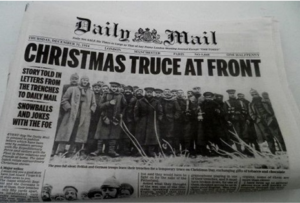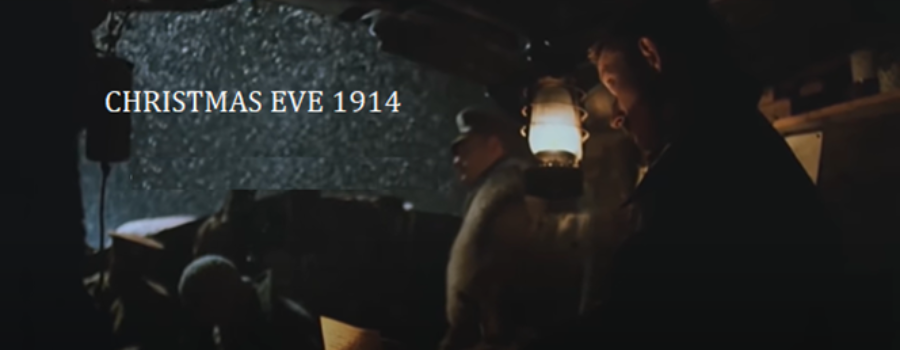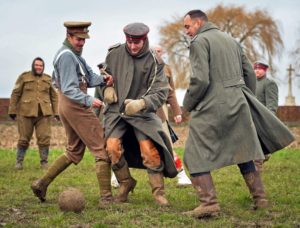“Let there be peace on earth, and let it begin with me
let there be peace on earth, the peace that was meant to be”
Click This to Watch the amazing Christmas truce of 1914 (3 minutes)
At the turn of the 20th century, the industrial revolution had perfected mechanized killing on a heretofore unprecedented scale. This included chemical weapons, airplanes, massive warships, and guns that could fire hundreds of rounds per minute. Enter WWI.
WWI began six months earlier on June 28th, 1914, with the assassination of Austrian archduke Franz Ferdinand by Slav nationalist Gavrilo Princip. Most naively believed it would be over very quickly and they would likely be home with their families in time for the holidays. How this mistaken belief repeats itself!
It would prove to be the bloodiest conflict ever up to that time with 20 million dead (including approx 10 million civilians) and another 21 million wounded. During the “war to end all wars” from 1914-1918, soldiers were living in misery along the trenches of the western front which stretched from the North Sea coast of Belgium through France nearly to Switzerland.
By the winter of 1914 tens of thousands had already died. The rest of the world became familiar with the terms “trench warfare” and “no man’s land.” This was a place so horrible that those who were stuck there believed their chances of survival were very slim.
British gunner and cartoonist Bruce Bairnsfather wrote “Here I was, in this horrible clay cavity miles and miles from home. Cold, wet through and covered with mud. There didn’t seem the slightest chance of leaving except in an ambulance.”
Trench warfare was up close and personal warfare. The enemy trenches were often only 100 yards or less away. Soldiers on both sides could often hear their enemy talking and smell their cooking. To survive you kept your head down unless a sniper found his mark and took you out.
They had just experienced the first battle of the Marne that September (the successful Allied defense of Paris). In seven days, Marne resulted in 250,000 casualties including 81,000 dead. That’s almost like a Pickett’s charge from our own Civil War every day, for seven days straight. Mass carriage left soldiers on both sides with plummeting morale.
Then Christmas came…and something miraculous came with it!
Click this to hear from those that were there (2 minutes)






